- Home
- /
- Body
- /
- Organs at Work
- /
- Eating for Radiant Skin
- /
- Eating for Healthy Skin:...
Listen to 7 min podcast on this topic here:
In Russian:
In English:
Listen to all episodes in our Podcasts:
Apple Podcast Engl|Rus|Spotify Engl|Rus
Your skin is a canvas, and the choices you make in your diet and lifestyle are the brushstrokes that paint its portrait. The pursuit of healthy, radiant skin is more than skin deep; it’s a reflection of what you eat and how you live. Welcome to our exploration of the profound connection between healthy food choices, a holistic lifestyle (HLS), and the art of nurturing your skin from within. In this article, we embark on a journey to uncover the secrets behind achieving a clear, youthful complexion by harnessing the transformative power of nutrition and holistic living. It’s time to understand how the food you consume and the choices you make can be your most potent allies in the quest for vibrant, beautiful skin.
Unlocking the Secrets of Skin Wellness
For centuries, cultures worldwide have recognized the link between what we put in our bodies and the condition of our skin. Modern science continues to unveil the mysteries of this connection, emphasizing that healthy food and a holistic lifestyle are pivotal factors in achieving and maintaining beautiful skin. The path to skin wellness doesn’t lie solely in expensive beauty products or invasive treatments; it begins with your daily choices and the nourishment you provide your body. Get in as we delve into the intricacies of this relationship, exploring how nutrition, hydration, stress management, exercise, and many other aspects of a holistic lifestyle contribute to the canvas of your skin’s health.
Beyond Skin-Deep Beauty
Our quest for healthy skin transcends surface-level beauty. It’s about embracing a lifestyle that promotes vitality, confidence, and overall well-being. The benefits of adopting a using treatment to skin health go far beyond aesthetics; they touch every aspect of your life. By the end of this article, you’ll be equipped with the knowledge and tools to make conscious decisions about the food you eat and the life you lead, unlocking the full potential of your skin and your self. Get ready to explore the incredible journey of nourishing your skin from within and redefining what it means to truly glow with health and vitality.
1. The Skin-Nutrition Connection
1.1. How the Skin Works
a. Three layers
Your skin is a remarkable and multifaceted organ that is crucial in defensing your body from external threats. It’s composed of three primary layers: the epidermis, the dermis, and the hypodermis, each with distinct functions. The epidermis is the outmost layer and serves as your skin’s shield against the environment. It’s responsible for the formation of your skin’s color, or pigmentation, through the production of melanin.
The middle layer, the dermis, comprises collagen and elastin, proteins that endorse your skin’s structure and resilience. It’s also home to blood vessels, sweat glands, and hair follicles. The deepest layer, the hypodermis, is mainly composed of fat and connects your skin to the underlying tissues.
b. Epidermal turnover
Intriguingly, your skin is more than a protective barrier. It’s a dynamic organ that undergoes constant renewal through a process named epidermal turnover. Old, worn-out skin cells are shed, and new ones take their place. This constant regeneration is influenced by diverse factors, like genetics, aging, and, notably, your diet and nutrition.
Understanding the intricacies of how your skin works is essential to grasp the impact that nutrition has on its health and appearance. Your skin’s well-being starts from the inside, with the nutrients you provide through your diet serving as the building blocks for this remarkable organ.
c. Multifunctionality of Skin
The skin’s functionality extends beyond protection and regeneration. It acts as a sensory organ, allowing you to perceive touch, pressure, and temperature changes. Moreover, your skin is vital in controlling body temperature, helping you stay cool through sweating and conserving warmth when necessary.
This complex, multifunctional organ is the canvas upon which the effects of your nutrition will be displayed. As we explore the skin-nutrition connection, it’s crucial to remember that feeding your skin through a harmonious diet can lead to a healthier and more vibrant complexion.
1.2. The Role of Nutrition
a. Nutrition: The Vital Catalyst for Healthy Skin
While genetics and environmental features undoubtedly influence your skin’s health, nutrition is pivotal in fixing its overall condition. Your skin cells require a constant supply of essential nutrients to carry out their functions effectively.
These nutrients serve as the raw materials for restoring troubled skin, promoting cell turnover, and defending against oxidative stress. In essence, what you consume has a direct impact on your skin’s vitality and appearance.
b. Collagen: Your Skin’s Elasticity Superhero
One of the most significant ways nutrition influences your skin is through its contribution to collagen creation. Collagen, a protein discovered profusely in the dermis, is accountable for maintaining skin’s tension and firmness.
A diet rich in vitamin C, for instance, is crucial for collagen synthesis, which is why citrus fruits, strawberries, and bell peppers are often associated with a youthful complexion. Likewise, amino acids from protein-rich foods promote the building blocks for collagen, ensuring your skin remains supple and resilient.
Comprehensive guide about collagen read in the article: Multifaceted Collagen: Types, Functions, and Benefit?
c. Vitamins and Minerals: The Skin’s Best Friends
In addition to collagen, various vitamins and minerals are vital for skin health. Vitamin A, for example, is known as the “skin vitamin” due to its role in skin cell production and repair. It’s no coincidence that carrots, sweet potatoes, and leafy greens, which are high in vitamin A, are considered skin-friendly foods.
Antioxidant vitamins like vitamin E and vitamin C serve advocacy your skin from free radicals, reducing the risk of precocious aging. As we delve deeper into the specific nutrients that benefit your skin, you’ll discover that a well-balanced diet can serve as your primary skincare regimen, offering a natural and lasting solution for achieving a glowing complexion.
In general about what are vitamins, minerals and what else exist read here: The ABCs of Nutrition: Vitamins, Minerals, and Other Micronutrients
1.3. The Gut-Skin Axis
Reveal the enchanting binding between your gut health and the outward of your skin. The gut-skin axis highlights the importance of a balanced microbiome in achieving healthy skin.
a. The Gut-Skin Axis: Where Gut Health Meets Radiant Skin
The interconnectedness of our body systems is a wonder of nature, and nowhere is this more evident than in the gut-skin axis. This emerging field of research sheds light on the profound bonds between your gut health and the emersion of your skin. The gut, frequently pleaded to as the “second brain,” is not only liable for digesting food and soaking nutrients but also is pivotal in your general well-being, like the health of your skin.
The intricate equilibrium of your gut microbiome, which consists of trillions of microorganisms, has a far-reaching impact on your skin’s complexion. When your gut is in harmony, your skin is more likely to be radiant and free from various dermatological issues.
b. Skin and the Microbiome: A Symbiotic Relationship
The name of the game in the gut-skin axis is balance. A balanced gut microbiome, characterized by a diverse community of beneficial bacteria, supports proper digestion and nutrient uptake.
These beneficial bacteria also assist adjust the immune system and monitor inflammation, both of which are directly linked to skin health. Conversely, an imbalanced gut, with an overgrowth of harmful bacteria, can lead to a cascade of negative results on the skin, including inflammation, redness, and states such as acne and eczema.
c. The Role of Nutrition in the Gut-Skin Axis
Proper nutrition is the linchpin in maintaining a harmonious gut-skin axis. A diet abundant in fiber, prebiotics, and probiotics supports the rise of valuable gut bacteria and can positively influence skin health. As we explore the dietary choices that contribute a healthy gut microbiome, you’ll discover how seemingly unrelated factors, such as fermented foods and dietary fiber, can be the key to achieving that radiant and blemish-free complexion.
2. Crucial Nutrients for Healthy Skin
2.1. Vitamin A: The Skin Vitamin
Vitamin A is often heralded as the “skin vitamin,” and for good reason. This crucial nutrient plays a central role in supporting healthy skin, ensuring its resilience and ability to heal. Within the body, vitamin A exists in various forms, with retinoids being the most biologically active. These compounds are essential for skin cell production, repair, and the overall regulation of skin health. When you have ample vitamin A in your diet, your skin benefits in numerous ways, from decreasing the emersion of fine lines to effectively combatting acne.
a. Retinoids: The Builders of Youthful Skin
At the heart of vitamin A’s role in skin health are retinoids, which are derivatives of vitamin A. They are renowned for their ability to induce collagen creation, a key structural protein that maintains skin’s ductility and firmness.
Retinoids also contribute the rise of new skin cells and ensure a regular turnover of the epidermis, keeping your skin wearing fresh and youthful. It’s no surprise that retinoids are common ingredients in many anti-aging skincare food, but their efficacy can be significantly enhanced when they are supplied through a vitamin A-rich diet.
b. Vitamin A Sources and Deficiency: The Effects on Skin
A harmonious diet that contains sources of vitamin A is the surest way to sustain your skin’s health. Foods like sweet potatoes, carrots, spinach, and liver are superb natural sources of vitamin A. Without an adequate consuming of this vital nutrient, your skin can suffer.
Vitamin A deficiency can lead to skin dryness, increased susceptibility to infections, and even a condition known as hyperkeratosis, characterized by the buildup of keratin protein, leading to rough, dry, and bumpy skin. In this subsection, we’ll explore the superiordietary origin of vitamin A and how to ensure you’re meeting your skin’s daily requirements.
2.2. Vitamin C: The Collagen Booster
a. Vitamin C: Your Skin’s Secret Weapon
Vitamin C, is a true superstar when it comes to promoting healthy and radiant skin. This water-soluble vitamin serves as a potent antioxidant, safeguarding your skin against injury produced by free radicals, which can drive to anticipatory aging and skin conditions. But its benefits extend far beyond its antioxidant features .
One of the most remarkable roles of vitamin C is its capacity to force collagen creation. Collagen is the structural protein accountable for supporting your skin’s elasticity, firmness , and youthful appearance. By integrating vitamin C-abundant foods into your diet, you are not only defensing your skin but actively stimulating the renewal of its building bricks.
b. Collagen and Its Vital Role in Skin Health
Collagen is the key to maintaining supple, youthful skin. Over time, natural collagen creation decreases, leading to the extension of fine lines, wrinkles, and whipping skin. This is where vitamin C steps in as a game-changer. Vitamin C promotes the synthesis of collagen by activating the enzymes necessary for collagen formation.
Consequently, it helps your skin to stay firm, plump, and more resilient. Vitamin C also aids in reducing hyperpigmentation, enhancing the skin’s texture, and supporting wound healing, making it an invaluable nutrient for general skin health.
Comprehensive guide about collagen read in the article: Multifaceted Collagen: Types, Functions, and Benefit?
c. The Power of Vitamin C Sources
To harness the benefits of vitamin C, it’s essential to incorporate a variety of vitamin C-abundant products into your diet. Citrus fruits like oranges, grapefruits, and lemons are famous for their high vitamin C content, but the vitamin is also abundant in other fruits such as kiwi, strawberries, and papaya, as well as vegetables like bell peppers, broccoli, and Brussels sprouts.
2.3. Vitamin E: An Antioxidant Shield
a. Vitamin E: Nature’s Antioxidant Guardian for Your Skin
Vitamin E is often praised as the body’s natural antioxidant shield, and its influence on skin health is nothing short of remarkable. This fat-soluble vitamin is celebrated for its power to defense your skin from oxidative stress and the harm caused by free radicals.
It does so by neutralizing these harmful molecules, decreasing the risk of early aging, fine lines, and skin conditions. In essence, vitamin E serves as a vigilant protector, ensuring your skin maintains its youthful and radiant appearance.
b. Vitamin E’s Mission: Protecting Your Skin from Within
The first role of vitamin E in skin health is its antioxidant features. It preserves the skin from the adverse influence of ultraviolet (UV) radiation, environmental pollutants, and other sources of free radicals. Durable exposure to UV radiation can lead to the creation of free radicals in the skin, which can injure collagen and elastin, causing the skin to drop its firmness and resilience .
By taking vitamin E into your diet, you can contribute your skin with a strong defense against these threats, helping it maintain its resilience and reduce the risk of developing wrinkles.
c. Vitamin E Sources and Skin Benefits
A diet rich in vitamin E suggests a few advantages for your skin. Some of the best sources of this vitamin containg nuts, seeds, and vegetable oils, particularly wheat germ oil, sunflower oil, and safflower oil. Integrating these foods into your diet not only supports your skin’s natural protective mechanism but also induses to general skin health.
2.4. Omega-3 Fatty Acids: The Skin Saviors
a. Omega-3 Fatty Acids: The Skin’s Natural Inflammation Fighters
Omega-3 fatty acids are widely recognized for their exceptional benefits, and they can be a game-changer when it comes to supporting skin health. These crucial fats, often found in fish and plant-based sources, are celebrated for their anti-inflammatory features .
Chronic inflammation is a usual causer behind diverse skin state , like acne, eczema, and psoriasis. Omega-3 fatty acids are like the firefighters of your body’s internal inflammation, helping to soothe the flames and prevent skin issues.
b. Anti-Inflammatory Action of Omega-3s
Inflammation is the body’s natural reply to damage or infection. However, when it becomes chronic and systemic, it can exhale havoc on your skin. Omega-3 fatty acids, especifically EPA and DHA discovered in fatty fish like salmon and mackerel, are known for their facultyto decrease inflammation throughout the body. By including these foods in your diet, you can help alleviate skin redness, itching, and swelling.
Additionally, alpha-linolenic acid (ALA), another type of omega-3 found in flaxseeds, chia seeds, and walnuts, can contribute to overall skin health by promoting moisture retention and reducing dryness, helping you achieve a smooth and supple complexion.
c. The Power of Omega-3 Sources
Fatty fish, such as salmon, trout, and sardines, are top-notch sources of omega-3s, providing a rich and readily absorbable supply of EPA and DHA. For those following a plant-based diet, ALA-rich sources like flaxseeds, chia seeds, and walnuts are excellent options.
Additionally, you can consider omega-3 supplements, such as fish oil capsules or algae-based supplements for those on vegetarian or vegan diets. The inclusion of these omega-3-rich foods and supplements in your daily nutrition can help you achieve a healthier and more balanced complexion, free from the redness and inflammation that often accompany skin issues.
More about fats read in the article: Fats and Healthy Eating
2.5. Zinc: The Acne Fighter
a. Zinc: The Unsung Hero in the Battle Against Acne
When it comes to battling one of the most generic skin woes—acne—zinc emerges as a formidable ally. This essential mineral, found in various foods, supplements, and skincare products, is celebrated for its role in reducing the severity and frequency of acne breakouts.
Zinc works its magic by controlling sebum creation, combating inflammation, and helping the skin heal more efficiently, making it an essential nutrient for those seeking purer and healthier skin.
b. Sebum Regulation and Acne Control
Acne often starts with the overproduction of sebum, the skin’s natural oil. Excess sebum can clog pores and create a breeding ground for acne-causing bacteria.
Zinc steps in as an effective sebum regulator, ensuring that your skin produces just the right amount of oil to keep it lubricated but not overly greasy. By maintaining sebum balance, zinc helps impede the coinage of new acne defeats, ultimately leading to smoother and blemish-free skin.
c. Zinc Sources and Achieving Clearer Skin
To leverage zinc’s acne-fighting potential, consider incorporating zinc-affluent foods into your diet, such as lean meats, legumes, nuts, and whole grains. Oysters, in particular, are among the most abundant dietary sources of zinc. Additionally, you can explore zinc supplements as a complementary strategy to your dietary intake.
These additives, accessible in diverse forms like zinc gluconate and zinc citrate, can be a valuable tool in your quest for clearer and healthier skin.
In-depth guide about zinc read in the article: Zinc: The Essential Mineral for Health and Well-being
2.6. Selenium: Guarding Against UV Damage
a. Selenium: The Silent Defender Against UV Assault
The sun’s warm embrace and the light it offers are undoubtedly uplifting, but prolonged exposure to ultraviolet (UV) rays can be severe on your skin. Here enters selenium, an essential mineral with a lesser-known yet crucial role in shielding your skin from the damaging effects of UV radiation.
Selenium is a powerful antioxidant, working in harmony with other antioxidants including vitamin E to counderact the detrimental free radicals produced by UV exposure. By making selenium a part of your diet, you can build an additional line of shield against premature aging and the development of skin conditions associated with UV damage.
b. Antioxidant Action of Selenium
Selenium contributes to the protection of skin cells by preventing oxidative injury summoned by UV radiation. UV rays can generate an excess of free radicals within the skin, leading to the breakdown of collagen and elastin, two proteins crucial for retaining skin’s structure and elasticity.
By consuming selenium-opulent products, you enhance your body’s ability to lower the oxidative stress incurred by UV exposure, effectively maintaining skin resilience and reducing the risk of evolving fine lines and wrinkles.
c. Selenium Sources and Healthy Skin
To harness the protective effects of selenium, consider including selenium-rich foods in your diet. Brazil nuts are one of the most abundant natural sources of selenium, with just a few nuts providing your daily recommended intake. Additionally, fish, lean meats, whole grains, and vegetables can offer valuable dietary sources of this mineral.
Selenium supplements are also available, but it’s essential to exercise caution and consult with a healthcare professional to ensure you’re not exceeding the recommended intake. In this subsection, we will explore the role of selenium in guarding against UV damage and how you can incorporate it into your daily nutrition for healthy and resilient skin.
3. Skin-Friendly Foods
3.1. Colorful Fruits and Vegetables
a. The Palette of Skin Healt
Colorful fruits and vegetables are not only a feast for the eyes but also a banquet for your skin’s health. Their vibrant hues are not just a reflection of their beauty but a testament to the rich array of antioxidants, vitamins, and minerals they contain. When you imbue your plate with these colorful wonders, you are essentially providing your skin with a powerful shield against damage and a source of nourishment that can assist you reach a healthy, glowing complexion.
All-round information about fruits and vegetables read in the article: Fruits and Vegetables: Abundant Palette of Healthy Eating
b. The Beauty of Antioxidants
Antioxidants are the unsung heroes in the quest for healthy skin, and colorful fruits and vegetables are brimming with them. For example, tomatoes boast lycopene, a potent antioxidant that protects your skin from the damaging effects of UV radiation and promotes collagen production.
Meanwhile, the deep orange hue of sweet potatoes signals the presence of beta-carotene, which your body can convert into vitamin A, vital for maintaining your skin’s youthful appearance. Berries, such as blueberries and strawberries, are packed with anthocyanins and vitamin C, which combat free radicals and support collagen synthesis, respectively.
The variety of antioxidants found in these foods can help ward off premature aging, reduce inflammation, and maintain your skin’s natural radiance.
c. Colorful Plate, Healthy Skin
The beauty of incorporating colorful fruits and vegetables into your diet lies in their diversity. Each color group, from the fiery reds to the lush greens, offers a unique combination of nutrients that promote skin health. To achieve the best results, aim for a rainbow of colors on your plate, embracing the reds, oranges, yellows, greens, blues, and purples.
Each hue signifies a different set of nutrients and antioxidants, so the more vibrant your diet, the more comprehensive your skin’s protection and nourishment. In this subsection, we’ll dive into the pecular benefits of various colorful fruits and vegetables and guide you in making them an integral part of your skin-friendly diet.
About principle of healthy plate read in the article: The Principle of the Healthy Eating Plate
3.2. Healthy Fats and Oils
a. The Skin’s Unsung Heroes
The idea of fats in your diet may sound counterintuitive to healthy skin, but not all fats are established equal. Healthy fats and oils, such as those found in avocados, nuts, and olive oil, are vital for keeping your skin’s natural moisture and resilience. These fats are rich in monounsaturated and polyunsaturated fatty acids, which serve as a protective shield for your skin cells, helping to inhibit moisture loss, inflammation, and premature aging.
b. The Role of Omega-3 Fatty Acids
Omega-3 fatty acids, a subset of healthy fats, are particularly crucial in skin health. They are prominent for their anti-inflammatory peculiarities and their faculty to intensify the skin’s natural barrier. By reducing inflammation, they help soothe skin states like acne and eczema.
They also contribute to the skin’s moisture deterrence, which is vital for sustaining a supple and youthful appearance. Sources of omega-3s, including fatty fish e.g. salmon and flaxseeds, should be a staple in your diet if you’re looking to fortify your skin’s defenses from within.
c. Healthy Fats in Your Diet
Incorporating healthy fats and oils into your daily meals can be a straightforward yet powerful path to endorse your skin. Avocado, with its creamy texture and abundant monounsaturated fats, is a versatile addition to salads, sandwiches, and smoothies.
Nuts, such as almonds and walnuts, not only provide healthy fats but also deliver vitamin E and antioxidants that further protect your skin. Olive oil, especially extra-virgin olive oil, can be your go-to cooking oil, enriching your dishes with its heart-healthy fats.
More about fats read in the article: Fats and Healthy Eating
3.3. Lean Proteins
a. The Essential Building Blocks for Healthy Skin
Proteins are the building blocks of body , and they are significant in maintaining healthy and radiant skin. Lean proteins, such as poultry, fish, and plant-based sources like legumes, are essential for your skin’s structure and overall health.
They are rich in amino acids, the fundamental components of proteins, which aid in the repair and regeneration of skin cells. Incorporating lean proteins into your diet ensures that your skin has the resources it needs to heal, maintain elasticity, and stave off the signs of premature aging.
b. Amino Acids: The Skin’s Allies
Amino acids, derived from the proteins you consume, are indispensable for your skin’s health. They facilitate collagen synthesis, a vital process for saving skin’s resiliency and resilience. In particular, collagen consists of amino acids including proline, glycine, and lysine, which promote to endorse skin’s structural integrity.
Without an adequate supply of these amino acids from your diet, your skin may become more prone to wrinkles, fine lines, and sagging. Lean proteins, such as skinless chicken, turkey, and fish, procure these vital amino acids that are substancial for a youthful complexion.
c. Lean Proteins for Healthy Skin
Incorporating lean proteins into your diet is a simple yet potent way to nourish your skin from within. Lean meats like chicken and turkey provide high-quality protein without superfluous saturated fats. Fatty fish, like salmon and mackerel, offer the added benefit of omega-3 fatty acids, which lower inflammation and further skin health.
For those on plant-based diets, legumes e.g. lentils, chickpeas, and tofu are excellent sources of plant protein that can enhance your skin’s vitality. In this subsection, we’ll delve into the significance of lean proteins in skin health and guide you in making them an integral part of your skin-friendly diet.
Across-the-board article about proteins read in the article: Proteins and Healthy Eating: The Marvels of Molecular Machines
3.4. Hydration: The Unsung Hero
a. The Silent Skin Savior
While we often associate nutrition with what we eat, it’s essential to remember that hydration plays an equally substantial role in endorsing healthy skin. Water is the unsung hero in your skin’s journey to stay moist, supple, and radiant. Without adequate hydration, your skin can quickly become dry, flaky, and prone to irritation. Water aids to suport the skin’s natural moisture harmony , contributing to its common health and outward.
More about water, its characteristics and much more read in the article: Water and the Human Body: The Vital Connection
b. The Significance of Water for Skin Health
The skin is your body’s largest organ, and it relies on water to stay properly hydrated. When your skin is well-hydrated, it retains its elasticity, which is vital for endorsing a youthful appearance. Dehydrated skin, per contra , is more susceptible to dryness, redness, and premature aging. Proper hydration ensures that your skin can function optimally, promoting cell turnover, detoxification, and the elimination of waste products.
c. Stay Hydrated for Glowing Skin
Staying hydrated doesn’t just mean drinking plain water, although that’s crucial too. You can also increase your water intake through water-abundant products such as cucumbers, watermelon, and citrus fruits, which provide both hydration and essential vitamins and antioxidants for your skin. The standard recommendation of drinking leastways eight cup of water per day is a good guideline, but your individual demands may alter depending on factors like climate, activity level, and overall health. In this subsection, we will explore the role of hydration in skin health and provide tips on how to ensure you’re giving your skin the moisture it deserves for a glowing complexion.
3.5. Probiotics: Gut Health and Skin
a. The Gut-Skin Connection
The link between gut health and skin is a fascinating one, and probiotics are a key player in this intricate relationship. Probiotics are live microorganisms, often cited to as “good bacteria,” that support the harmony of your gut microbiome. A harmonious gut microbiome is not only essential for digestive health but also has a profound sway on the appearance of your skin.
When the gut is in a state of equilibrium, it can assist to decrease inflammation, govern the immune system, and keep skin conditions at bay. Intergrating probiotic-abundant products into your diet is a adorable way to nurture your gut, thereby endorsing your skin’s health and vibrancy.
b. Balanced Gut Microbiome and Skin Health
Your gut and skin are in permanent relation, and a balanced gut microbiome is the key to this harmonious interaction. A healthy gut ensures proper digestion and nutrient suction , which, in turn, provides your skin with the essential nutrients it needs to thrive.
Additionally, a balanced gut microbiome assists prevent the overgrowth of harmful bacteria, reducing inflammation in the body. By keeping inflammation in check, your gut crucial in preventing skin state such as acne, eczema, and psoriasis.
c. Probiotic-Rich Foods for a Radiant Complexion
To maintain your gut health and, in turn, your skin’s well-being, examine taking probiotic-abundant foods into your daily diet. Yogurt, kefir, sauerkraut, and kimchi are all sumptuous sources of probiotics that can induce restore and endorse a healthy gut microbiome. Probiotic supplements are also available for those who may have difficulty obtaining sufficient probiotics through their diet
4. Foods to Avoid
4.1. Sugar and Refined Carbohydrates
a. Skin’s Sweetest Enemies
Sugar and refined carbohydrates may be some of the most tempting but ultimately harmful culprits when it comes to your skin’s health. High consumption of sugar and refined carbs can vent havoc on your skin by triggering inflammation, insulin spikes, and the production of forward glycation end products (AGEs).
These processes accelerate the aging of your skin, leading to the development of wrinkles, fine lines, and dull complexion. Avoiding or significantly reducing your intake of these skin-detrimental elements can be a potent step towards maintaining healthy and youthful skin.
About sugar get known in the article: Sugar: Its Impact on Health
b. The Sugar-Inflammation Connection
Sugar, especially in the form of high-fructose corn syrup and refined sugars, is one of the primary culprits behind chronic inflammation in the body. Inflammatory processes can come out on your skin as redness, puffiness, and increased sensitivity.
Chronic inflammation also breaks down collagen and elastin, the two proteins accountable for supporting your skin’s youthful appearance. By curtailing your sugar intake, you can significantly lower the risk of skin inflammation and promote a more balanced and resilient complexion.
c. Refined Carbs and AGEs: A Recipe for Early Aging
Refined carbohydrates, like white bread, pasta, and sugary cereals, drive to prompt spikes in blood sugar levels. When blood sugar levels are permanently high, the body produces undue glycation end products (AGEs), which injure collagen and elastin. AGEs result in a deprivationof skin resilience and the formation of wrinkles.
Reducing the consumption of refined carbs not only helps steady blood sugar levels but also preserves your skin’s youthful qualities.
4.2. Dairy Products
a. A Delicate Balance
Dairy products, while abundant in vital nutrients such as calcium and protein, can sometimes be a double-edged sword when it comes to skin health. Dairy contains hormones and growth factors that can influence your skin’s oil production and contribute to the development of acne.
It’s essential to strike a balance when including dairy in your diet. Some individuals may be more sensitive to the hormonal content in dairy, leading to an increase in acne severity. If you suspect that dairy is impacting your skin negatively, it may be worth considering alternative sources of calcium and protein to maintain a healthy complexion.
b. Hormones and Acne: The Dairy Connection
Dairy foods , e.g. milk, cheese, and yogurt, can contain natural and synthetic hormones. These hormones are often administered to cows to increase milk production. When consumed, they can influence your body’s hormonal balance, potentially driving to increased sebum (oil) production in your skin.
This excess sebum can clog your pores and create an environment conducive to acne development. While not everyone is affected by these hormonal fluctuations, those prone to acne may find that reducing or eliminating dairy from their diet results in clearer and healthier skin.
c. Dairy Alternatives for Skin Health
If you’re concerned about the impact of dairy on your skin, there are many dairy-free alternatives available today. Plant-based milk like almond, soy, and coconut milk can serve as substitutes in your diet, providing essential nutrients without the hormonal content found in dairy.
Additionally, dairy-free yogurts, cheeses, and other dairy-free products are now widely accessible. Making the switch to these alternatives can be an effective strategy for individuals who experience skin issues related to dairy consumption. In this subsection, we’ll explore the potential link between dairy and skin health, as well as options for integrating dairy-free alternatives into your diet for a clearer complexion.
4.3. Processed and Fried Foods
a. The Temptations Your Skin May Regret
Processed and fried foods are the darlings of convenience but the enemies of your skin’s health. These culinary indulgences are often high in trans fats, refined sugars, and artificial additives, which can wreak havoc on your complexion.
Consuming these foods can trigger inflammation, lead to oxidative stress, and put a risk your skin’s natural defenses. To maintain clear and radiant skin, it’s crucial to confine the consuming of processed and fried foods, reserving them for occasional treats rather than staples of your diet.
About the top 10 most detrimental products read here: The Top 10 Most Harmful Products: Hidden Perils in Everyday Life
b. Inflammation and Processed Foods
Processed foods, particularly those with high levels of added sugars and unhealthy fats, are notorious for promoting inflammation throughout the body. Inflammation is a well-known culprit behind skin issues like acne, redness, and puffiness.
Regular consumption of processed foods can lead to chronic inflammation, which accelerates the aging of your skin by breaking down collagen and elastin. By reducing your intake of processed foods, you can effectively mitigate skin inflammation and promote a smoother and healthier complexion.
c. A Recipe for Premature Aging
Fried foods, laden with trans fats and often cooked in unstable oils, are a significant source of oxidative stress in your body. Oxidative stress occurs when there is an imbalance between free radicals and antioxidants, resulting in damage to skin cells. This can lead to the development of wrinkles, fine lines, and a dull complexion. Avoiding fried foods or opting for healthier cooking methods like grilling, baking, or sautéing can assist to defense your skin from the detrimental influence of oxidative stress and support its natural vitality.
4.4. Alcohol and Caffeine
a. The Balancing Act for Your Skin
Alcohol and caffeine are common indulgences in many people’s lives, but they can also have notable effects on your skin. Alcohol, when consumed in excess, can lead to dehydration, which in turn can result in dry and dull skin. Additionally, alcohol can dilate blood vessels, causing redness and puffiness.
Caffeine, while offering a quick energy boost, can disrupt your sleep patterns, leading to fatigue and under-eye circles. While it’s not necessary to eliminate alcohol and caffeine entirely from your diet, it’s essential to consume them in moderation and pay attention to their potential impact on your skin.
b. Alcohol and Dehydration
Alcohol is a diuretic, meaning it encourages your body to expel more fluids through urination. This can lead to dehydration, which is a common culprit behind dry and lackluster skin. Dehydrated skin is more prone to fine lines and wrinkles, as it lacks the plumpness that well-hydrated skin possesses.
To minimize the impact of alcohol on your skin, it’s advisable to drink in moderation, alternate alcoholic beverages with water, and prioritize proper hydration to counteract its dehydrating effects.
More about alcohol and if it is safe doze read in the article: Alcohol and Healthy Life Style: The Impact on the Body
c. The Hidden Impact on Your Skin’s Vitality
Caffeine is a stimulant that can be found in coffee, tea, and various other beverages and foods. While it offers an energy boost, consuming caffeine in excess, especially in the afternoon or evening, can disrupt your sleep patterns. Quality sleep is essential for skin repair and rejuvenation.
When you’re sleep-deprived, your skin may appear fatigued, and you may notice under-eye circles and puffiness. It’s wise to be mindful of your caffeine intake, especially in the hours leading up to bedtime, to ensure you’re getting the restorative sleep that your skin needs.
5. The Role of Hydration
5.1. The Importance of Water
a. The Life-Giving Force
Water is the elixir of life, and when it comes to your skin, its importance cannot be overstated. Adequate hydration is the cornerstone of skin health. Your skin is composed of cells, and like all cells in your body, they require water to function optimally.
Proper hydration ensures that your skin remains plump, elastic, and free from dryness. It is crucial in endorsing the skin’s natural barrier, preventing external irritants from penetrating and causing skin issues.
Do not forget that we have more about water here: Water and the Human Body: The Vital Connection
b. The Formula for Moisture and Elasticity
Water is your skin’s best friend when it comes to retaining moisture and elasticity. A well-hydrated skin layer is less prone to fine lines, wrinkles, and the signs of aging. Dehydrated skin, on the other hand, can appear dry, flaky, and more prone to irritation. When your skin is properly hydrated, it has a natural radiance and a smooth, supple texture that reflects good health.
c. Barrier Function and Skin Health
The outermost layer of your skin, known as the stratum corneum, serves as a protective barrier. This barrier defends your body against environmental aggressors, including pollutants, bacteria, and UV radiation. Proper hydration maintains the integrity of this barrier, ensuring it functions optimally.
When this barrier is compromised, your skin becomes more susceptible to irritants, driving to state like redness, itching, and inflammation. To preserve the health and resilience of your skin, maintaining an adequate intake of water is paramount.
5.2. Herbal Teas for Skin Health
a. Nourishing Your Skin from the Inside Out
Hydration doesn’t always have to come from plain water. Herbal teas can be a delightful and nutritious way to increase your fluid intake while simultaneously benefiting your skin. Many herbal teas are packed with antioxidants and anti-inflammatory features that provide skin health. For instance , green tea is renowned for its high levels of catechins, which defense the skin from UV radiation and prevent early aging.
Chamomile tea soothes inflammation and irritation, making it an excellent choice for those with sensitive skin. By incorporating a variety of herbal teas into your daily routine, you can hydrate your skin from within and enjoy the added bonus of these skin-loving nutrients.
b. Green Tea: The Skin’s Guardian
Green tea is celebrated not only for its refreshing taste but also for its numerous skin benefits. It’s rich in antioxidants, particularly catechins, which fight free radicals and protect the skin from UV injury. Regular consumption of green tea can lower the risk of skin cancer, prevent premature aging, and maintain a youthful complexion. Additionally, green tea’s anti-inflammatory features assist to soothe skin state including acne and redness, making it a versatile choice for skin health.
c. Chamomile Tea: Soothing Elixir for Sensitive Skin
Chamomile tea is a gentle but potent ally for those with sensitive or irritated skin. This herbal tea has anti-inflammatory and anti-microbial properties that can alleviate skin redness, itching, and swelling. The natural oils in chamomile also help to hydrate and soothe the skin.
Whether sipped as a warm beverage or used as a topical treatment, chamomile tea is a versatile option for promoting calm and healthy skin.
6. Lifestyle Factors and Skin Health
6.1. Exercise
a. The Path to Healthy Skin and Vitality
Regular physical activity is not only useful for your overall health but also is significant in supporting healthy and glowing skin. Exercise increases blood circulation, which, in turn, delivers vital nutrients and oxygen to your skin cells. This enhance blood flow promotes flush away toxins and waste products, promoting a clearer complexion.
Moreover, exercise triggers the release of endorphins, which reduce stress, a known contributor to skin issues like acne and premature aging. While the type and intensity of exercise can vary greatly, making it a consistent part of your routine can contribute to improved skin health and a more youthful appearance.
b. Blood Circulation and Skin Vitality
When you engage in physical activity, your heart rate increases, pumping blood more efficiently throughout your body. This enhanced circulation benefits your skin by ensuring a more abundant supply of nutrients and oxygen.
These essentials promote healthy cell turnover and repair, maintaining a youthful and radiant complexion. The improved blood flow also aids in removing waste products and toxins, decreasing the risk of skin troubles like acne and inflammation.
c. Stress Reduction and Skin Harmony
Stress is a common enemy of healthy skin, as it can trigger diverse skin states and accelerate the aging process. Exercise, by promoting the release of endorphins, acts as a natural stress reliever.
These feel-good hormones help reduce anxiety, improve mood, and alleviate the physical manifestations of stress on your skin. A stress-free mind and body often translate to fewer breakouts, less redness, and a more balanced complexion.
More about how physical activity affect on our body read here: Sport and Healthy Lifestyle: Physical Activity Contribution in Health
6.2. Sleep
a. The Golden Ticket to Healthy and Youthful Skin
The importance of a good night’s sleep for maintaining healthy skin cannot be emphasized enough. During deep sleep, your body undergoes various processes to repair and rejuvenate itself, and your skin benefits immensely from this downtime. Quality sleep is when your skin cells regenerate, collagen production is at its peak, and the skin’s natural moisture balance is restored.
On the flip side, insufficient or poor-quality sleep can lead to a compromised skin barrier, leaving your skin more vulnerable to dryness, irritation, and the signs of premature aging. Prioritizing a consistent and adequate sleep routine is one of the simplest yet most effective ways to ensure your skin remains vibrant and youthful.
b. Cellular Regeneration and Skin Repair
While you sleep, your body’s cellular repair mechanisms kick into high gear. This is when damaged skin cells are replaced, and the day’s wear and tear are mended. Collagen, the protein responsible for skin elasticity and youthful appearance, is produced in greater quantities during sleep.
Without proper sleep, these vital processes are disrupted, leading to a lackluster complexion, increased fine lines, and a greater susceptibility to skin conditions.
c. Skin Barrier Function and Sleep
A well-rested body ensures that the skin’s natural moisture barrier remains intact. This barrier is essential for retaining hydration and preventing irritants from entering the skin. When sleep is compromised, the skin barrier can weaken, making your skin more prone to dryness, redness, and inflammation.
Additionally, insufficient sleep often results in under-eye circles and puffiness, which can make you appear fatigued and less vibrant.
How to create the ideal sleep conditions read in the article: Cortisol and Sleep
6.3. Stress Management
a. Your Skin’s Silent Savior
Stress, the silent saboteur of skin health, can take a toll on your complexion in more ways than one. When you’re under stress, your body releases cortisol, a hormone that can trigger an array of skin issues, from acne breakouts to excessive oil production.
Chronic stress can also lead to inflammation, which accelerates the aging process and exacerbates skin conditions. Finding effective ways to manage stress is essential for maintaining a clear and youthful complexion. Whether through relaxation techniques, mindfulness, or regular exercise, decreasing stress levels can significantly contribute to your skin’s overall health.
b. Cortisol and Skin Woes
Cortisol, often referred to as the “stress hormone,” can wreak havoc on your skin when produced in excess. It stimulates the sebaceous glands in your skin, leading to increased oil production. This excess oil can clog pores and create an environment conducive to acne breakouts.
Chronic stress also triggers inflammation, which can manifest as redness, puffiness, and an overall uneven complexion. Managing stress effectively is a key strategy for keeping cortisol levels in check and preserving the health and clarity of your skin.
c. Stress Reduction Techniques
Implementing stress lowering techniques can have a profound impact on your skin. Mindfulness meditation, yoga, deep breathing exercises, and spending time in nature are just a few examples of strategies that can assinst you to control stress.
Regular physical activity also plays a dual role in stress regulation by promoting the release of endorphins, which alleviate stress, and improving overall skin health through increased blood circulation. Finding the stress reduction method that works best for you can significantly contribute to supporting a healthy and radiant complexion
The comprehensive guide about meditation read in the article: The Transformative Power of Meditation
6.4. Sun Protection
a. The Shield for Healthy and Youthful Skin
Protecting your skin from the sun’s harmful UV rays is a non-negotiable element of maintaining healthy and youthful skin. Prolonged and unprotected sun exposure can lead to a range of skin issues, from sunburn and premature aging to an increased risk of skin cancer.
While the sun provides essential vitamin D, moderation and protection are key. Using sunscreen, wearing protective clothing, and seeking shade are all effective measures to safeguard your skin from the sun’s adverse effects.
b. UV Radiation and Skin Damage
Ultraviolet (UV) radiation, both UVA and UVB, penetrates the skin and can result in damage that’s often invisible to the naked eye. While a tan might look appealing, it’s essentially your skin’s response to UV radiation, a sign of damage and increased melanin production.
This damage accelerates the aging process, leading to the development of fine lines, wrinkles, and age spots. In more severe cases, chronic sun exposure can lead to skin cancer, emphasizing the importance of sun protection in your daily routine.
c. Safeguarding Your Skin
Effective sun protection involves more than just applying sunscreen. While sunscreen is a vital component, it’s also essential to wear protective clothing like wide-brimmed hats, long-sleeved shirts, and sunglasses.
Seeking shade during peak sun hours, typically from 10 a.m. to 4 p.m., can also reduce your exposure to harmful UV radiation. By incorporating these habits into your daily life, you can enjoy the sun’s benefits while minimizing the risks to your skin.
7. Skin Conditions and Dietary Solutions
7.1. Acne
a. A Common Skin State with Dietary Solutions
Acne is a common skin condition that affects people of all ages, and it often arises from a combination of factors, including genetics, hormonal changes, and diet. While there is no one-size-fits-all solution for acne, making wise dietary choices can certainly play a role in managing and preventing breakouts.
Consuming foods that are rich in antioxidants, anti-inflammatory compounds, and low in processed sugars can help keep acne at bay. Additionally, maintaining proper hydration is crucial to prevent your skin from overproducing oil in response to dehydration, which can clog pores and lead to acne. By understanding the dietary triggers for acne and adopting a skin-friendly diet, you can work toward clearer and healthier skin.
b. Balancing Blood Sugar Levels
One significant dietary factor in managing acne is balancing blood sugar levels. Diets high in refined sugars and processed carbohydrates can lead to rapid spikes in blood sugar, which subsequently trigger an insulin response. Insulin, in turn, stimulates the sebaceous glands in your skin to produce more oil.
This excess oil can clog pores and create an environment favorable to acne-causing bacteria. By opting for complex carbohydrates, lean proteins, and foods abundant in fiber, you can help stabilize blood sugar levels and reduce the risk of acne breakouts.
c. Anti-Inflammatory Foods for Acne
Inflammation is critical in the development of acne, making anti-inflammatory foods a valuable addition to your diet. Foods like fatty fish (rich in omega-3 fatty acids), berries (packed with antioxidants), and green tea (containing catechins) possess anti-inflammatory properties that can help mitigate skin redness and inflammation.
By intaking these foods in your diet, you can contribute your skin with the tools it demands to maintain a clearer complexion and prevent acne flare-ups.
7.2. Eczema
a. Understanding the Dietary Connection
Eczema, also prominent as atopic dermatitis, is a chronic skin state characterized by itchy, inflamed, and sometimes painful patches of skin. While the precise cause of eczema is not fully understood, there is evidence to suggest that diet may play a role in both triggering and managing the condition. Many individuals with eczema find that certain foods can exacerbate their symptoms.
Common dietary triggers for eczema include dairy, eggs, gluten, and nuts. Identifying and avoiding specific trigger foods can lead to significant improvements in eczema symptoms. Moreover, consuming foods rich in anti-inflammatory compounds, such as omega-3 fatty acids and antioxidants, can help soothe and support the healing of eczematous skin.
b. Dietary Triggers and Eczema Flare-Ups
For many people with eczema, certain foods can act as triggers, leading to worsened symptoms. Dairy products, in particular, are a common dietary culprit. Dairy contains proteins like casein and whey, which can irritate the skin and worsen inflammation.
Eggs, nuts, and gluten are other potential triggers. Identifying and eliminating these foods from your diet can lead to a noticeable reduction in eczema symptoms, including itching and redness.
c. Anti-Inflammatory Foods for Eczema Relief
While avoiding trigger foods is crucial, incorporating anti-inflammatory foods into your diet can also be beneficial for managing eczema. Omega-3 fatty acids, found in fatty fish like salmon and walnuts, have potent anti-inflammatory properties that can help soothe eczematous skin.
Antioxidant-rich foods, such as berries, spinach, and green tea, can also mitigate inflammation and support skin healing. By making these dietary changes, individuals with eczema can experience relief from the discomfort and irritation associated with the condition.
7.3. Psoriasis
a. Navigating the Dietary Solutions
Psoriasis is a chronic skin condition characterized by the rapid buildup of skin cells, resulting in red, scaly, and sometimes itchy patches on the skin’s surface. While there is no cure for psoriasis, dietary choices can significantly impact its severity and management.
People with psoriasis often find relief by adopting an anti-inflammatory diet that minimizes triggers. Such a diet typically includes a variety of fruits, vegetables, and foods rich in omega-3 fatty acids, like fatty fish and flaxseeds. Avoiding trigger foods, such as red meat, processed foods, and alcohol, can help reduce inflammation and alleviate the symptoms of psoriasis.
b. Inflammatory Foods and Psoriasis Aggravation
Inflammation is a key driver of psoriasis symptoms, and certain dietary choices can either promote or alleviate this inflammation. Foods high in saturated fats and processed sugars, such as red meat and sugary snacks, can exacerbate inflammation and lead to more severe psoriasis symptoms.
By limiting the intake of these pro-inflammatory foods and opting for anti-inflammatory alternatives, individuals with psoriasis can help control their condition more effectively.
c. Omega-3 Fatty Acids: A Psoriasis-Friendly Nutrient
Omega-3 fatty acids, found in fatty fish like salmon and trout, are known for their anti-inflammatory properties. Consuming omega-3-rich foods can help reduce the severity of psoriasis symptoms by mitigating inflammation.
Omega-3 supplements are also an option for those who may not regularly include these foods in their diet. By incorporating omega-3 fatty acids into their eating habits, individuals with psoriasis may find their skin becomes more manageable and less prone to flare-ups.
7.4. Premature Aging
a. Dietary Solutions: A Path to Youthful Skin
Premature aging is a common concern for many individuals, and it’s often linked to lifestyle factors, including diet. While genetics play a significant role in how your skin ages, dietary choices can either accelerate or delay the process. Consuming a diet rich in antioxidants, such as vitamins C and E, can help protect your skin from free radical damage and collagen breakdown, both of which contribute to premature aging.
Foods like colorful fruits and vegetables, nuts, and whole grains are abundant sources of these skin-boosting nutrients. Conversely, excessive consumption of sugar and trans fats can promote the development of wrinkles and fine lines by initiating a process called glycation. To maintain youthful and healthy skin, it’s essential to prioritize a diet that supports its natural resilience and vitality.
Get known about secrets of healthy aging here: 8 Secrets of Longevity and Well-being from Blue Zones residents
b. Free Radicals and Skin Aging
The aging process is partly driven by the accumulation of free radical damage in the skin. Free radicals are unstable molecules that attack healthy skin cells, leading to oxidative stress, collagen degradation, and the formation of fine lines and wrinkles.
Antioxidants are the body’s natural defense against free radicals. By incorporating antioxidant-rich foods into your diet, you can help neutralize free radicals and reduce the signs of premature aging. Berries, citrus fruits, and leafy greens are just a few examples of foods that can provide your skin with the antioxidants it needs to stay youthful and radiant.
c. Glycation and the Sugar Connection
Excessive sugar consumption can lead to a process called glycation, where sugar molecules bind to proteins like collagen and elastin in the skin. This process results in the formation of advanced glycation end products (AGEs), which make the skin less elastic and more prone to wrinkles.
By reducing your sugar intake and opting for complex carbohydrates and natural sweeteners like honey or maple syrup, you can limit the glycation process and keep your skin looking youthful for longer.
About Geroprotectors read here: Geroprotectors: The Secrets to Healthy Aging
8. Supplements for Skin Health
8.1. When to Consider Supplements
a. Enhancing Your Skin’s Vitality
While a well-balanced diet is the foundation of healthy skin, there are situations in which supplements can be considered to enhance your skin’s vitality. It’s important to remember that supplements are not a one-size-fits-all solution, and their use should be guided by specific needs and deficiencies.
If you have a particular skin condition, like eczema or psoriasis, or you’re at risk of specific nutrient deficiencies due to dietary restrictions, supplementation might be beneficial. It’s essential to consult with a healthcare professional or a dermatologist to determine the most appropriate supplements for your unique skin needs.
Common supplements for skin health include vitamins C and E, omega-3 fatty acids, and collagen. By choosing the right supplements and using them under professional guidance, you can further support your skin on its journey to health and radiance.
b. Targeted Skin Conditions
Certain skin conditions, such as acne or psoriasis, may require specific supplements to help manage and alleviate symptoms. For example, individuals with psoriasis may benefit from omega-3 supplements due to their anti-inflammatory properties. For acne-prone skin, supplements like zinc and probiotics can be advantageous in balancing oil production and reducing inflammation.
The key is to identify the supplements most relevant to your skin condition, in consultation with a healthcare professional, to ensure a comprehensive approach to skin health.
c. Bridging the Gaps with Skin-Friendly Supplements
Nutrient deficiencies can affect your skin’s health and appearance. If your diet is lacking in specific vitamins, minerals, or essential fatty acids, it can lead to skin issues. For instance, vitamin C deficiency can result in slow wound healing and skin fragility, while an insufficient intake of vitamin E may contribute to premature aging. By conducting blood tests and working with a healthcare provider, you can pinpoint any nutrient deficiencies and tailor supplementation accordingly to address these gaps in your diet.
9.2. Popular Skin Supplements
a. Boosting Your Skin’s Vitality
Several supplements have gained popularity for their potential to promote skin health. These supplements are often chosen for their skin-boosting properties and their role in combating various skin issues. Here, we’ll explore some of the most popular skin supplements and their potential benefits for your complexion.
b. Vitamin C: The Skin’s Best Friend
Vitamin C is a well-known skin supplement celebrated for its antioxidant properties and ability to stimulate collagen production. Collagen is a crucial protein for skin elasticity, and as we age, its production decreases, leading to fine lines and wrinkles. Vitamin C helps counteract this decline, promoting a firmer and more youthful complexion.
Additionally, it’s known for its ability to reduce hyperpigmentation and protect the skin from UV damage. Incorporating vitamin C-rich foods or supplements into your diet can help you maintain healthy and radiant skin.
c. Vitamin E: Skin Nourishment from Within
Vitamin E is another popular skin supplement recognized for its antioxidant power. It helps protect the skin from oxidative stress and UV radiation, reducing the risk of premature aging and skin damage.
Vitamin E also supports skin hydration and promotes an overall smooth and supple complexion. Including vitamin E-rich foods like nuts, seeds, and green leafy vegetables in your diet can provide your skin with the nourishment it needs to stay healthy and vibrant.
d. The Fountain of Youth
Collagen supplements have surged in popularity due to their potential to boost skin elasticity and reduce the signs of aging. Collagen is a structural protein that gives skin its firmness and smooth texture. As we age, collagen production naturally declines, leading to sagging skin and wrinkles.
Collagen supplements aim to replenish and support this essential protein, helping to maintain a youthful appearance. While the results may vary from person to person, many individuals have reported improvements in skin elasticity and hydration after incorporating collagen supplements into their daily routine.
9.3. Consult a Professional
a. Your First Step to Skin Supplement Success
While supplements can be a valuable addition to your skincare routine, it’s crucial to consult a healthcare professional or dermatologist before starting any new supplementation regimen.
A qualified expert can assess your specific skin needs, potential nutrient deficiencies, and any underlying health conditions that may impact your skin health. They can provide personalized guidance on which supplements are most suitable for you and ensure that you’re not taking excessive or unnecessary doses of vitamins and minerals.
To make an appointment with our specialist follow the link.
b. Balanced Approach to Supplements
A healthcare professional can help you adopt a balanced and holistic approach to skin supplements. Instead of relying solely on supplements, they can guide you to maintain a well-rounded diet that supports your skin’s health naturally.
They may also recommend certain lifestyle changes, like adequate sun protection, stress management, and hydration, as these factors play a significant role in skin health. By seeking professional advice, you can ensure that your supplement choices are aligned with your overall well-being and tailored to your unique skin concerns.
More information about services of functional nutritionist read here: Services of Functional Nutritionist
c. Preventing Potential Risks
Not all supplements are suitable for everyone, and some may interact with medications or exacerbate certain health conditions. A healthcare professional can identify any potential risks and contraindications associated with specific supplements, ensuring your safety and well-being.
They can also monitor your progress and make adjustments to your supplementation plan as needed.
The list services of functional nutritionist is here
A Journey of Skin Wellness
In our quest for healthy skin, we’ve journeyed through the intimate connection between what we consume, how we live, and the radiant canvas of our skin. It’s clear that the path to skin wellness begins from within, nourished by healthy food choices and a holistic lifestyle (HLS). This journey has unveiled the profound secrets of achieving clear, youthful, and vibrant skin by harnessing the transformative power of nutrition and holistic living.
The Inner and Outer Beauty
The beauty of this approach lies not just in the visible results but in the lasting impact on your overall well-being. By embracing a lifestyle that nurtures your skin from within, you’re not only enhancing your external appearance but also boosting your confidence, vitality, and self-esteem. You’re painting a portrait of health and beauty that extends far beyond surface-level aesthetics.
Embracing the Transformative Power of Lifestyle and Nutrition
As we conclude this exploration, remember that the canvas of your skin is ever-evolving, and your choices hold the brush. You have the power to nourish your skin with the very best nature provides, to adopt habits that reduce stress, to embrace exercise and hydration, and to celebrate the symbiotic relationship between your skin’s health and your overall well-being.
Creating Your Masterpiece
This article has been your guide, but the masterpiece is yours to create. Your journey to vibrant, beautiful skin begins anew every day, with each meal, each decision, and each commitment to a holistic lifestyle. So pick up your brush, select your colors, and continue to paint the portrait of your health and beauty, knowing that the canvas of your skin holds infinite potential for you to explore and celebrate.
Recap the key takeaways from this comprehensive guide, emphasizing the profound impact of nutrition and lifestyle choices on achieving and maintaining healthy, radiant skin. Nourishing your skin from the inside out is a lifelong journey, and this article equips you with the knowledge and tools to embark on that journey with confidence and success.
In closing, remember that your skin reflects not only what you put on it but what you put into your body. Embrace a diet rich in skin-nourishing foods, adopt a mindful and balanced lifestyle, and seek professional advice when needed to unlock the full potential of your skin’s natural beauty. Here’s to healthy, glowing, and radiant skin!
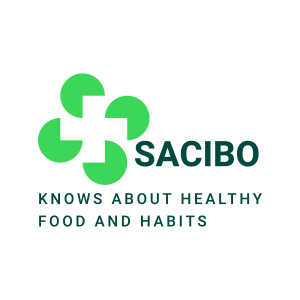























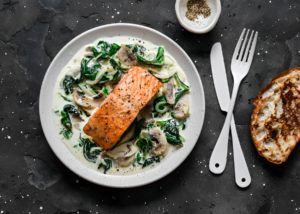















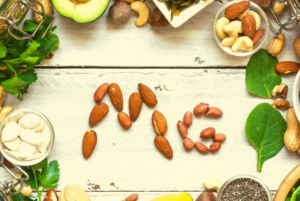






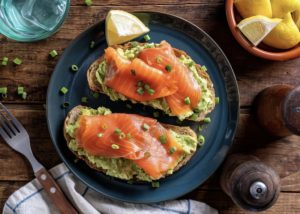
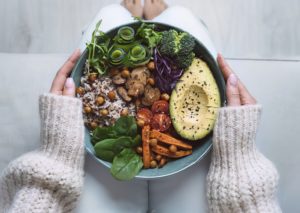


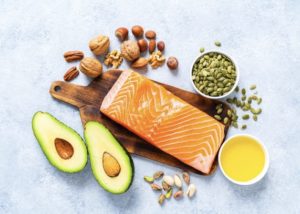








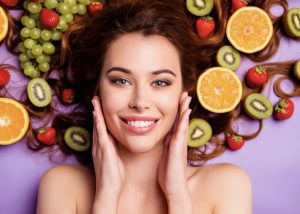

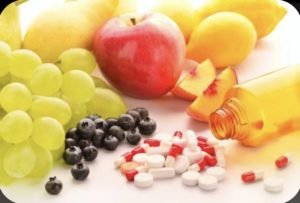

0 Comments